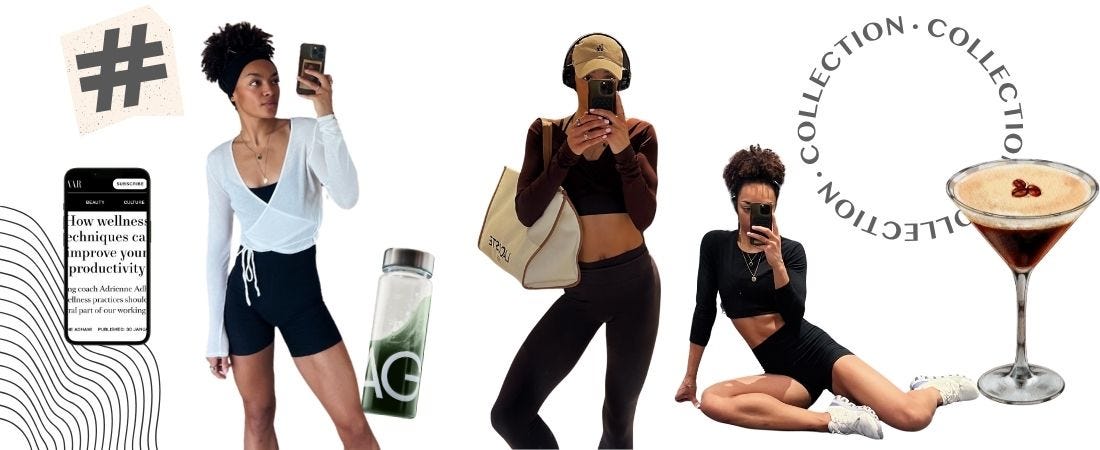Wellness used to be simple—eat well, move your body, get enough sleep. It was about feeling good and living well. But in 2025, our wellness routines have become a relentless pursuit of optimised perfection. Even as someone who works in the wellness industry, I find today’s version of "ideal" unattainable.
Let’s talk about the word of the moment: cortisol. Trouble sleeping? That’s due to cortisol. Bloated? Oh, that’s probably cortisol. Gaining weight? Well, that’s because your cortisol levels are too high. The solution? Get more sleep—but also wake up early for optimal circadian alignment. Get more steps, at least 10,000 a day. But also rest is essential. Don’t overtrain. Eat more protein and fats–don’t forget about fibre. Lift weights—we don’t do HIIT training anymore. Meditate. Tape your mouth at night so you nasal breathe whilst you sleep. Take magnesium before bed. Get morning sunlight. Don’t drink alcohol. Don’t be stressed. Drink more water. Do Pilates—specifically reformer Pilates. OMG, seriously? Who is actually living like this?
At some point, wellness stopped being about actual well-being and became another productivity metric. The daily wellness routine is now a twelve point checklist. Meditation and ‘recovery’ are now tasks to complete. The thing that was meant to support our health has taken on the same intensity as the hustle culture it was designed to overcome.
It’s no longer enough to simply take care of yourself. Every aspect of health now has a measurable data point attached: steps tracked, minutes of sleep monitored, protein grams logged, hydration levels measured. The message is that you could always be doing things in a healthier way.
The problem? We’ve turned wellness into work. Getting enough protein is now a full-time job.
Signs that you’ve fallen into the wellness trap:
It feels like a chore. Wellness no longer feels good, it’s just adding more and more things to your never-ending to-do list.
It creates guilt. Didn’t get 10,000 steps? Didn’t meditate? Didn’t meal-prep? Must do better tomorrow.
You’re constantly buying new wellness must-haves. There’s always a new supplement, a new class, a new wellness hack that you have to try.
Wellness culture is not just another consumer trend, it’s now a way of life. Don’t get me wrong, I’m a wellness advocate. I host a podcast talking about wellness. I want to live an active, healthy life. But is it possible to have too much of a good thing? Wellness doesn’t have to be binary. Personally, I don’t want a life without red wine and white bread.
Wellness has become a luxury.
Here’s the truth: a 2025 wellness lifestyle is expensive.
The ability to measure cortisol, follow a personalised diet and escape to a meditation retreat requires money and a lot of time. If you’re a shift worker, if you’re parenting a toddler, if you’re living payday to payday, you’re probably not going to be ticking everything off the wellness bingo card.
When did we make wellness a status symbol? Being healthy- physically, mentally, emotionally, is now a signal of success, discipline, and even superiority.
The reality? Most people just want to feel good. We don’t necessarily need (or want) a daily biohacking protocol. We need more sleep, more movement, good quality food, and a bit less stress. That’s it.
If your wellness routine is stressing you out, is it really making you well?
So, what’s the solution? Let’s go back to the basics. The things that are proven to make the biggest difference to our overall well being are simple and not that new.
If you’re doing the basics consistently then you are probably doing enough. One late night or chocolate croissant won’t destroy your health.
Being ‘well’ is not about perfection. It’s about feeling good in your actual day to day life. Your ideal wellness routine is the one you can sustain, afford and enjoy.
Thanks for reading,
Adrienne.






I couldn't agree more! It is becoming a chore. I think we all need to find what works best for us and stick with it, not try every single "wellness trend" that pops up. They are so many there's no point adding all of them into our routines.
I’d argue even just doing the fundamentals for your health feels like a full-time job because things like movement, eating real food, and sleeping 8 hours used to be built into our daily routines. But with a modern lifestyle, they no longer are.
For example, before artificial light and Netflix, people just went to bed when it was dark because there was nothing else to do. Before cars, people had to walk everywhere. Before ultra-processed food, everything was “farm to table.”
These days, it feels like we have to “make time” for basic health habits because we do. I’m actually going to publish a post about this soon.